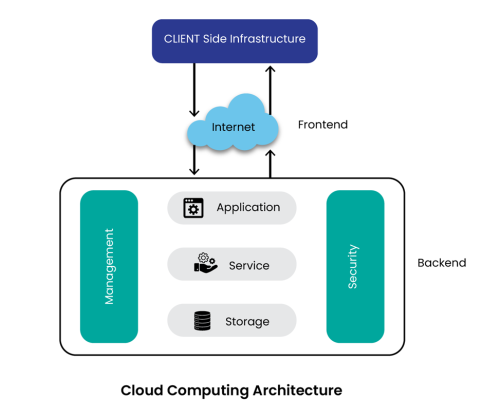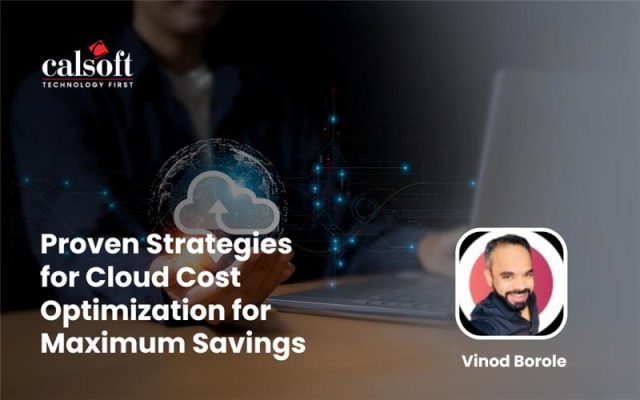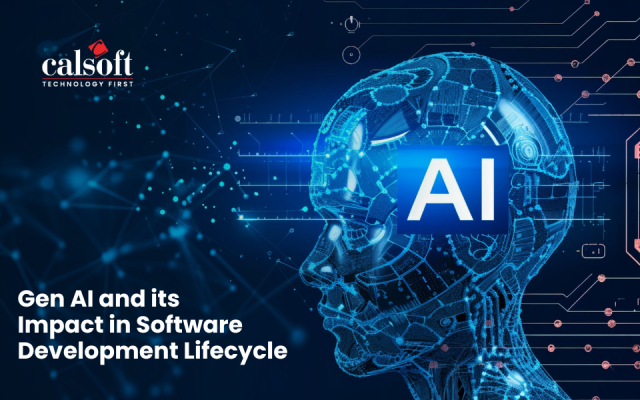Cloud computing is transforming the business landscape, addressing critical issues such as performance and data storage for over 70 percent of digital workspaces. With 94% of companies integrating cloud computing into their operations, cloud app development has become essential for creating productivity-enhancing applications that streamline workflows and elevate customer experiences.
Web applications running on a cloud platform are different from applications running on-premises in many ways. A cloud-based infrastructure provides many services and options to develop a scalable and highly available application that can cater to a global audience. It provides unlimited opportunities for an application to scale and match business requirements. To reap real benefits from cloud platforms, applications need to be developed using services and options provided by cloud infrastructure.
However, running applications on a cloud platform has its challenges. In this blog, we not only focus on listing down the challenges of cloud application development but also share insights on how to overcome them.
What is cloud application development?

Note: The provided diagram illustrates the fundamental architecture of cloud computing. It depicts the interaction between the client-side infrastructure and the backend components via the internet. The backend includes essential elements such as application, service, storage, management, and security, highlighting the comprehensive structure required to support cloud services effectively. Primarily, cloud computing offers the essential infrastructure and services that form the foundation and facilitate the development and deployment of cloud-based applications. This is an important aspect as it allows scalability, flexibility, without hurting the budget, enabling businesses to cater to ever-changing market demands without making upfront investments.
Definition of Cloud Application Development
Cloud app development involves creating applications that run on cloud infrastructure, leveraging cloud services for storage, processing, and networking. This approach allows businesses to build, test, and deploy applications rapidly without relying on physical hardware. By utilizing cloud environments, companies can ensure scalability, enhance security, and streamline management, ultimately improving performance and reducing costs while meeting dynamic business needs.
Sneak Peek into the Benefits of Cloud Applications
A lot has changed in the realm of cloud computing since its inception, giving rise to cloud application development. Today, the cloud is not just deployed to reduce IT costs but comes with an agenda of gaining a competitive advantage, enhancing user experience, and transforming business processes.
Irrespective of the size, moving to the cloud gives organizations the ability to move faster, be more agile, and innovate better.
Let’s take a quick look at the benefits cloud computing brings to businesses:
1. Faster time to market
Faster turnaround time is crucial for application development. A delay in building applications can lead to increased costs and potentially hurt the budget. With the cloud, developers can spin or retire instances in seconds and accelerate the development process, making it easier to generate and test newer ideas without having to worry for the right hardware.
2. Improved Collaboration
The beauty of the cloud is that it is not limited to a location and is available anywhere and anytime you need it. Data can be accessed and worked upon from any part of the world. This flexibility enables employees to collaborate and work on projects in real time in a seamless manner. This not only saves time but fosters better teamwork, enables better decision-making, and improved innovation.
3. Prevention of Data Loss
Cloud computing solutions curtail the loss of data due to various reasons such as hardware malfunction, software errors, etc. On the contrary, if you are on the cloud, you are saved from the risk of losing data that is saved locally or on-premises.
4. Better Monitoring
Any new cloud application demands continuous monitoring to make sure any issues related to performance or security are fixed at the earliest. With the cloud at its disposal, the IT team is well-equipped with the right tools that help keep track of the application and is adept at quickly responding to errors and bugs.
Challenges and Potential Solutions for Cloud Application Development
Every problem has a solution, and this saying goes well, even when we talk about challenges related to cloud application development. Just like two sides of a coin, cloud application development comes with a plethora of benefits and has its limitations too. Well, these challenges can be disastrous, and sometimes dubious, so without any further ado, let’s take stock of the problems and probable solutions related to cloud application development.
| Context | Challenges | Solutions |
| Interoperability and Portability
|
When building an app on the cloud, interoperability translates to the ability to write code that can be deployed with multiple cloud providers, despite the differences between them. At the same time, it is essential to keep in mind that interoperability and portability are primary features of any cloud environment. But at the same time, one of the most significant challenges during cloud migration is to make sure the systems communicate with one another. Running components or systems designed for one cloud environment in another is crucial for portability. Ensuring your cloud software is compatible with other cloud environments is vital.
|
To make your cloud application portable and interoperable, embracing the necessary cloud computing standards is most recommended. The more accessible data is, the more interoperable the software and the platforms will be. Additionally, keeping the operating protocols standard will make it easier and more cost-efficient to implement, operate, and maintain. |
| Performance Challenges
|
If you are unaware of the location of your data centers, the chances of not knowing how long it will take to render data, style sheets, and more are high and can compromise the app’s experience quotient. Even though it might be a matter of seconds, it can bring down the entire user experience. | To resolve this issue, it is essential to research the cloud service provider’s architecture and get answers to a list of questions to ensure the app’s performance is not compromised in the long run. Identify which applications can be safely migrated to the cloud and monitor them rigorously to ensure optimal performance. Testing at an early stage is highly recommended as that is the time when enterprise applications begin to communicate with the applications in the cloud. Therefore, ensuring end-to-end testing is critical to avoid any performance issues. |
| Decoupled Service Architecture | To cater to the ever-changing needs of customers, it is essential for cloud applications to not be tightly coupled to the core service logic and implementation. While it may sound straightforward, creating services that allow applications to remain loosely coupled can be quite challenging in a cloud environment. | To deal with this challenge the primary aspect that needs to be considered is training and better knowledge or education. Loosely coupled cloud applications ensure they are independent and deliver the necessary agility and reusability when components are modified, replaced, or added. Developers that engage with different vendor services need to understand the various protocols and take ownership for orchestrated application behavior. |
| Vendor Lock-In
|
A vendor lock-in is a situation that restricts the client from readily moving from one cloud provider to another and involves hefty expenditures otherwise. This might also occur if the client has signed up for services that are particularly offered by a certain cloud provider.
|
Being vigilant and careful is the key. Before signing up for a cloud space from different cloud service providers, clients need to understand if the services of the primary provider are compatible with the ones available in the market. |
| Query Oriented vs. API Oriented Programming
|
Developing systems that involve MapReduce, streaming, and complex event processing demands that developers adopt a more functional, query-oriented approach to data processing, especially when working with federated data sets. Instead of relying on extensive OO APIs, these systems use extensions of SQL or XQuery-like operations, allowing clients to pass in application-specific functions that execute across various data sources. While many developers are familiar with basic SQL, they often lack the experience needed to perform complex queries or function compositions. | To ensure the success of cloud applications, developers must receive training and gain practice in formulating and executing advanced query programs. |
Apart from the broader challenges mentioned above, let’s take a quick look at another set of challenges that are broadly subdivided into eight categories. Well, this is not a fixed number. This information is based on the feedback collected from multiple application developers.
- Availability: Measured as a percentage of application uptime
- Data Management: Data is hosted in different locations. Eventual Consistency vs. Strong Consistency
- Messaging: Loose coupling between components and services, asynchronous messaging, ordering of messages, and idempotency
- Management and Monitoring: Applications must expose runtime information for management and monitoring of the system
- Security: The application is exposed on the Internet, outside trusted on-premises boundaries. It prevents malicious or accidental actions which can compromise security. It prevents disclosure or loss of information. Security has three sub-categories:
– Data Security
– Network Security
– Identity Management - Resiliency: Multi-tenancy uses shared platform services. Resiliency provides the ability to gracefully handle and recover from failures and the ability to detect failures.
- Performance and Scalability: Responsiveness of a system. It is the ability of a system to handle increased load without any impact on performance.
- Design and Implementation: Consistency and coherence in component design and deployment. Reusability of components.
Each challenge mentioned above describes an important aspect of web applications. Developers need to handle each challenge explicitly depending upon the requirement. Public cloud vendors provide various services and features to address these issues.
Services offered by major public cloud vendors to handle challenges like availability, data management, messaging, management, monitoring, and security are mentioned in the table below concerning AWS and Azure.
Options provided by AWS and Azure
| Category | AWS | Azure | |
| Availability | Autoscaling, Load Balancing | Azure Autoscale | |
| Data Management | RDS, DynamoDB, | StoreSimple, Cold Store, SQL Server | |
| Messaging | SQS, SNS, SES | Azure Service Bus | |
| Management and Monitoring | CloudTrail, CloudWatch, VPC Flowlogs | Azure Monitor | |
| Security | Data Security | KMS | Key Vault |
| Network Security | VPC, Security Groups, Network ACLs | Azure Virtual Network | |
| Identity Management | AWS Directory Service, IAM | Azure Active Directory | |
| Resiliency | AWS Global Infrastructure, Availability Zone | Azure Regions | |
| Performance and Scalability | Compute Services (EC2), Container Services, CloudFront, ElastiCache, etc. | VM’s, Azure Containers, Azure CDN, Azure Managed Cache, etc. | |
Note: Basic compute and storage services are not included in this table. This is not the complete list of services offered by AWS and Azure. This is just a high-level view of services by two major service providers. Other cloud providers like Rackspace, IBM BlueMix, and many others offer similar services.
The design and implementation of a true cloud-native application are among the major challenges faced by application developers. The challenges described above must be kept in mind while designing the application. As mentioned earlier, one of the biggest worries for cloud-based applications is vendor lock-in. Applications closely integrated with specific vendor services cannot be migrated to other cloud platforms. This creates dependency on that specific cloud vendor, making migration to other cloud platforms a costly affair. The solution is to develop a cloud-agnostic application.
Such challenges can be handled by implementing cloud design patterns into code. There are many design patterns that can be used in applications. Some of the design patterns are:
- Federated Identity: Authentication is managed by an external identity provider. A dedicated security application manages the identity. This simplifies the application
- Gatekeeper: Dedicated host instance acting as a broker between client and services/application. Limits the attack surface of the application. An additional layer of security.
- Valet Key: Restricted access to a specific resource or service. Can be implemented using a token or a key.
- Command Query Responsibility Segregation (CQRS): Segregate operations using a separate interface.
- Circuit Breaker: Handles failures gracefully. Improves stability and resiliency.
- Integration Provider: Messaging and sharing of data hosted by different providers.
This is not the complete list of cloud design patterns. This link is a collection of commonly used cloud design patterns.
Developers can leverage options provided by the cloud platform and implement cloud design patterns to develop a robust, resilient, and truly secure cloud-hosted application. Few points to keep in mind:
- Make your application as generic as possible
- Make it stateless
- Store the session information in some persistent data store
- Don’t log onto the file system. Use a proper logging mechanism
- Don’t code using any specific infrastructure dependency
- Use API gateway
- Use the DevOps tool to automate the deployment and configuration of your application on the cloud
Final Takeaway
Cloud application development is one of the most user-oriented technologies and on the hind side is bound to face some challenges. The goal of the cloud is to offer services that can be used easily without having to worry about the hardware or the overall infrastructure. Despite the list of benefits cloud computing offers businesses, certain complexities can make businesses feel overwhelmed.
Calsoft being a pioneering name in the technology industry, has transformed the cloud journey for a myriad of businesses through innovative cloud solutions. We ensure seamless connectivity, real-time analytics, and optimized operations, ensuring enhanced productivity and faster results.
Our comprehensive services include cloud architecture, DevOps, network engineering, and security, all designed to deliver scalable, secure, and efficient cloud-based applications. At Calsoft, we drive cloud transformations that multiply your business growth and ensure your products are cloud-ready.






